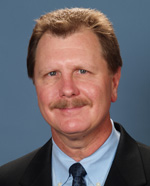Specifically Speaking with Mark Bennett President of MSB Security Consulting, based in Austin, Texas
By Martha Entwistle
Updated Fri July 10, 2015
 What differentiates MSB Security Consulting in terms of experience?
What differentiates MSB Security Consulting in terms of experience?
We have gained an in-depth understanding of the physical security consulting business in 25 years and hundreds of projects. Many of our security design projects start with a comprehensive risk assessment to determine the threats to—and vulnerabilities of—a client's facility and operations. From this effort we will typically develop a security design criteria that defines the security measures, both operational and physical which are applied to specific areas or operations of a client's business to mitigate the risks. The SDC serves a guideline for the consistent application of security measures across the client's facility. In addition to Revit or AutoCADD device location drawings, we develop detailed system riser diagrams that illustrate the physical, functional and logical connection of all security devices (cameras, card readers, panels, client workstations and servers) in the system. It's really important for the system integrator to understand how all the pieces work together. We also develop very specific mounting details for devices. MSB's founder started his career as integrator installing and servicing access control, CCTV and burglar alarm systems and has seen the good, bad and ugly of system installations so he understands the importance of setting clear expectations for the work product. All Division 28 specifications are written in standard CSI format. Since starting the firm in 2006 we have seen a demand for the design of large enterprise-level video management system projects involving hundreds of cameras and multiple recording server locations. While consulting on these projects, we have gained a very good understanding of the various video management system software vendors and how to select the appropriate cameras, client workstations and video recording server hardware.
What are your thoughts on the benefit of thermal cameras?
The benefits of thermal cameras for detection and surveillance with their ability to “see” in any light condition and through rain, fog, snow or foliage are well known, but they were historically cost-prohibitive for most commercial applications. However, in the last couple of years several camera companies have introduced models with 640 x 480 resolution for under $7,000 down to $800 for a 80 x 45 resolution imager. This makes it cost effective to include a few thermal cameras in projects where there is a need for surveillance in difficult lighting conditions or where the use of artificial lighting including IR illumination would be undesirable or where covert surveillance is required. Another benefit of thermal cameras is when they are used with video analytics for detection along a fence line for a perimeter intrusion detection system (PIDS). Outdoor PIDS applications are very challenging due to the environment and sources of false positives for the video analytic. We use thermal cameras [that] run the video analytic within the camera and benefit from the uncompressed video. This allows the camera to filter out objects that are larger or smaller than a human intruder to reduce nuisance alarms and by geo-referencing, the camera can pinpoint the intruder location on the fence line and direct a separate pan tilt camera to the location for assessment and tracking. There are also several models of pan tilt cameras with both thermal and day/night imagers that optimize the benefits of both imager technologies. With competition driving the costs down we believe thermal cameras will become commonplace in many commercial applications.
How do you stay up-to-date with the latest innovations in video surveillance?
It's a challenge because it seems like new and better products are being introduced every day. In addition to reading Security Systems News and other publications we attend the trade shows, ISC, ASIS and the IAPSC conference to see the new products and visit with the manufacturers. I probably spend a couple hours or more each week reading the various publications. We also get invited to several consultant events sponsored by manufacturers each year. These events are great because they involve more hands-on and in-depth interaction with the products. Understanding the features and functions of the cameras is very important to us and we typically have five or six demo cameras from different manufacturers running on a video management system in our office so we get to see how they install and perform. This allows us to try them before our clients buy them. As a consultant, our clients expect us to be up-to-date on the technology. It's part of the job.
Comments